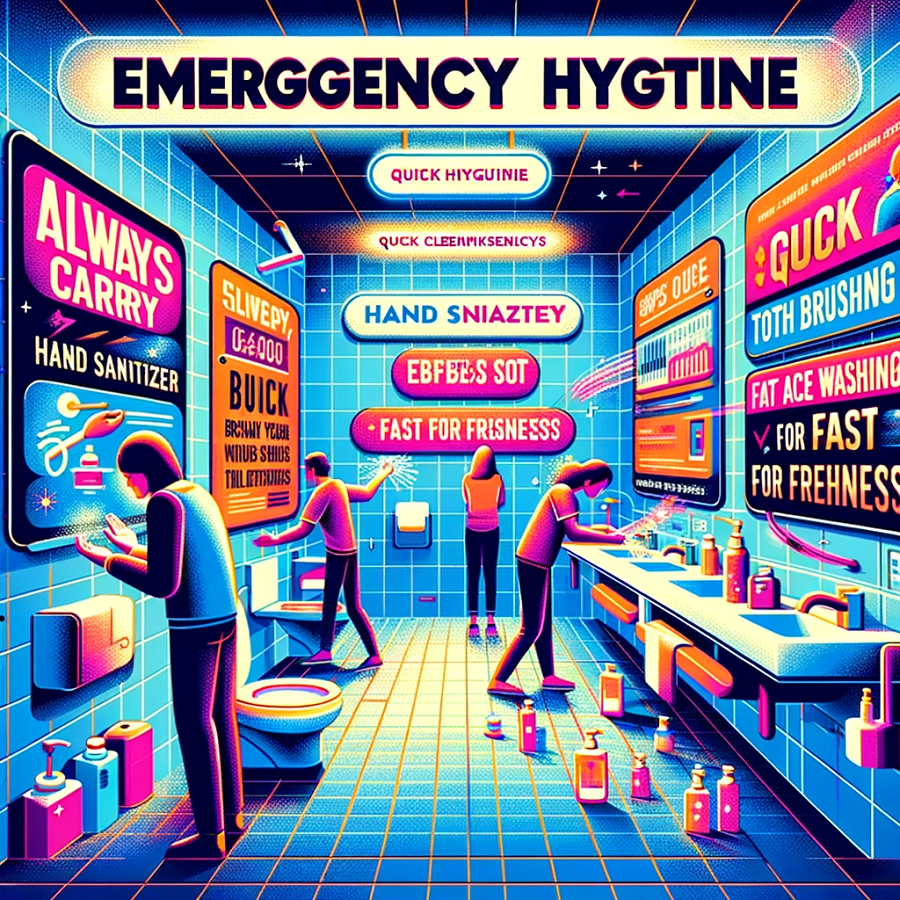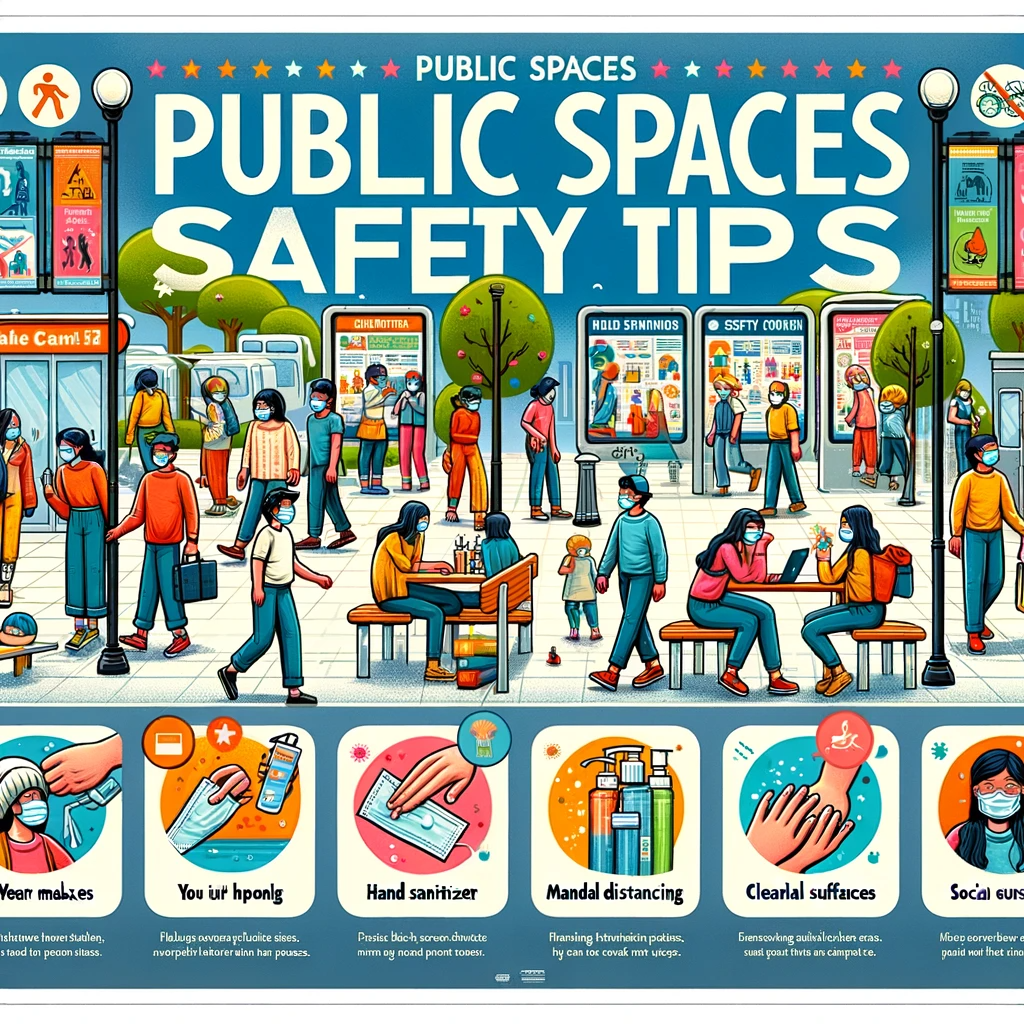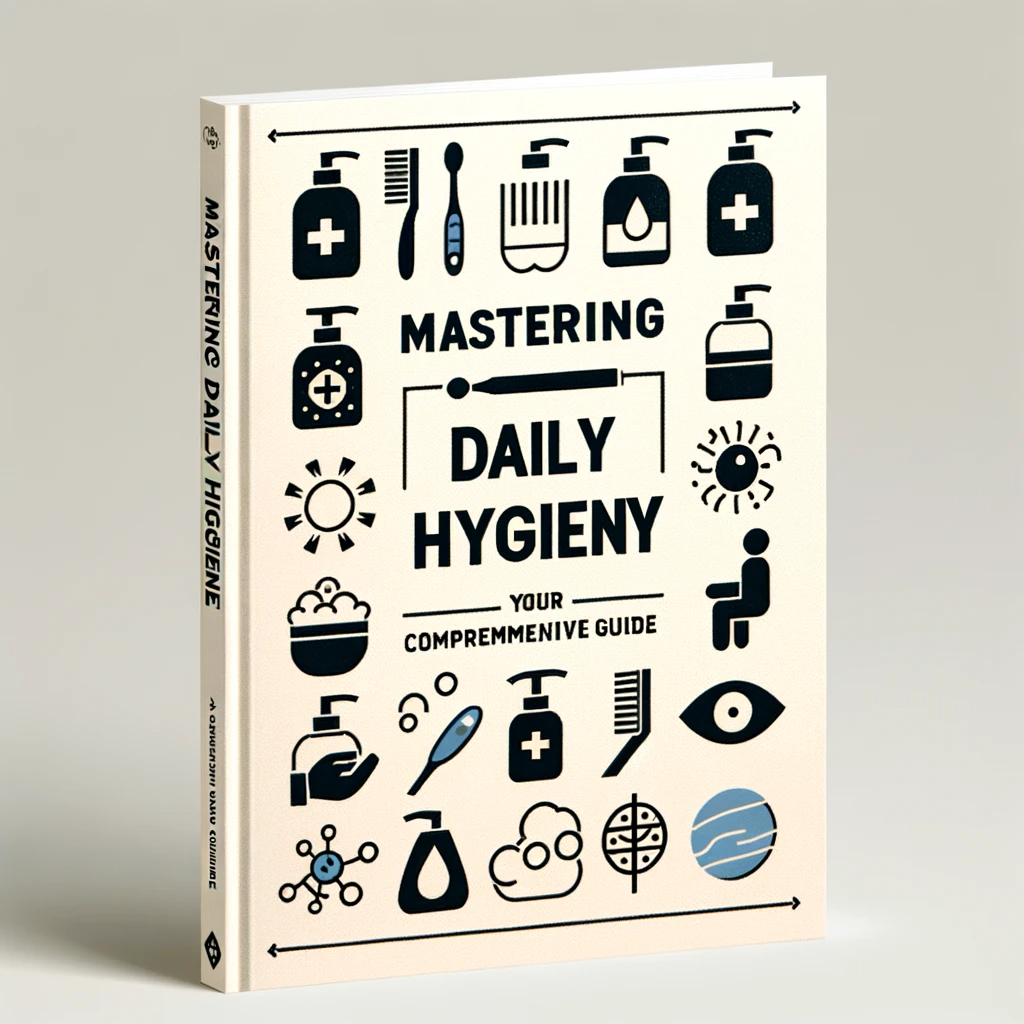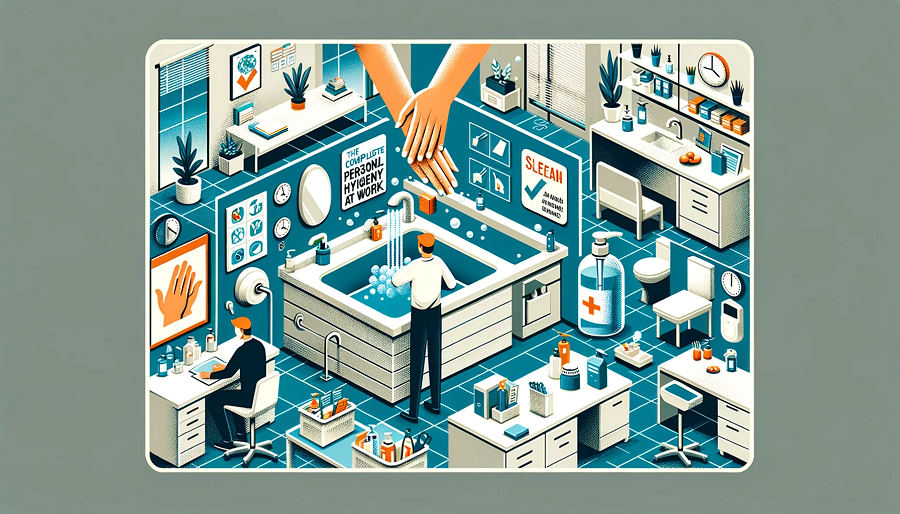The Importance of Emergency Hygiene
Emergency hygiene is a critical aspect of survival and well-being during challenging situations. Whether you’re facing a natural disaster, a power outage, or unexpected circumstances like camping in the wilderness, understanding the significance of emergency hygiene can mean the difference between staying healthy and falling ill.
When regular access to clean water and sanitation facilities is disrupted, the risk of diseases and infections can skyrocket. In emergency situations, hospitals and medical resources may be limited or inaccessible, making it even more crucial to prevent illness through proper hygiene practices.
Here are some key reasons why emergency hygiene matters:
- Disease Prevention: Proper hygiene reduces the risk of infectious diseases, including gastrointestinal infections, respiratory illnesses, and skin infections.
- Infection Control: Injuries and wounds can easily become infected in emergency settings. Maintaining cleanliness can prevent complications and speed up the healing process.
- Mental Well-being: Staying clean and feeling refreshed can boost your morale and mental well-being during stressful times.
- Community Health: Good hygiene practices in a community setting can prevent the spread of illnesses, protecting not only yourself but also those around you.
Basic Hygiene Essentials
Regardless of the situation, certain hygiene practices remain fundamental. Here are some basic hygiene essentials that should guide your efforts in emergency situations:
- Handwashing: Proper handwashing is one of the most effective ways to prevent the spread of germs. Use soap and clean water for at least 20 seconds to remove dirt and bacteria from your hands.
- Oral Hygiene: Don’t neglect your dental health. Brush your teeth regularly, or at least rinse your mouth with water, to prevent dental issues that can exacerbate health problems.
- Bathing: Regular bathing or body cleaning helps remove sweat, dirt, and bacteria from your skin, reducing the risk of skin infections.
- Wound Care: In the case of injuries or wounds, keep them clean and covered to prevent infection. Change bandages as needed.
- Food Safety: Ensure safe food handling practices to avoid foodborne illnesses. Cook food thoroughly, store it properly, and use clean utensils.
Quick Steps to Cleanliness
In emergency situations where resources like water and soap are limited, you can still maintain a reasonable level of hygiene with quick and practical steps:
- Water Conservation: Use water sparingly. A small bowl of water can be sufficient for a quick hand and face wash.
- Wet Wipes and Sanitizers: Keep wet wipes and hand sanitizers in your emergency kit. They require minimal water and effectively clean hands and surfaces.
- Dry Shampoo: If a shower isn’t an option, use dry shampoo to keep your hair clean and fresh.
- Reusable Towels: Opt for reusable towels or cloths that can be washed and reused, minimizing waste and conserving resources.
Calculating Water Usage for Hygiene
In emergencies, calculating your water usage for hygiene is vital to ensure that you allocate water wisely. Use this simple formula to estimate your daily hygiene water needs:
Water Needed for Hygiene = (Number of People) x (Liters per Person)
By calculating your hygiene water requirements, you can plan accordingly and prioritize your water usage for essential needs like drinking and cooking.
Hygiene Improvements for Emergency Situations
To enhance your hygiene practices during emergencies, consider the following improvements:
- Water Filtration: Invest in a portable water filtration system to ensure a clean water supply, reducing the risk of waterborne illnesses.
- Solar Showers: Solar-powered showers can provide warm water for bathing when electricity is scarce, improving comfort and hygiene.
- Portable Toilets: In the absence of traditional toilets, consider using portable toilets or creating makeshift latrines to maintain sanitation and prevent contamination.
Maintaining Personal Hygiene on the Go
Maintaining personal hygiene while on the go, especially during emergency situations, can be challenging, but it’s essential for your well-being. Whether you’re traveling, camping, or facing a disaster, here are some practical tips to help you stay clean:
- Travel-Sized Essentials: Invest in travel-sized hygiene products like mini toothpaste, soap, shampoo, and deodorant. These compact items are easy to carry and can help you maintain personal hygiene while away from home.
- Minimalist Packing: When space is limited, prioritize lightweight and multi-purpose hygiene items. For example, choose a soap that can be used for both body and clothes washing.
- Reusable Containers: Consider using reusable, refillable containers for your hygiene products. This not only reduces waste but also allows you to carry just the amount you need.
- Hand Sanitizers: Keep hand sanitizers in your bag. They are a quick and effective way to clean your hands when soap and water are not available.
- Baby Wipes: Baby wipes are versatile and can be used for personal hygiene, cleaning surfaces, and even as makeshift toilet paper.
- Dry Shampoo: Dry shampoo is a handy product for keeping your hair clean and fresh when traditional washing is not an option.
- Disposable Razors: If you prefer to shave, consider carrying disposable razors that are compact and easy to use.
Remember that maintaining personal hygiene on the go may require some adaptability and creativity, but it’s essential for your comfort and health.
Hygiene Products and DIY Solutions
Emergency situations may require you to get creative with hygiene solutions when access to standard products is limited. Here are some essential hygiene products and DIY solutions to consider:
- Homemade Soap: Learn to make soap from natural ingredients like olive oil and lye. Homemade soap can be an excellent alternative when commercial soap is unavailable.
- DIY Hand Sanitizer: Mix rubbing alcohol (at least 60% alcohol content) with aloe vera gel to create your hand sanitizer. This DIY solution is effective at killing germs.
- Cloth Menstrual Pads: For women, consider reusable cloth menstrual pads as an eco-friendly and cost-effective alternative to disposable pads or tampons.
- Cloth Diapers: In situations where diapers are in short supply, cloth diapers can be an excellent choice. They are washable and reusable, reducing waste.
- Natural Deodorants: Explore natural deodorant options that you can make at home, such as a mixture of baking soda and cornstarch.
- Reusable Menstrual Cups: Menstrual cups are a reusable and eco-friendly alternative to tampons or pads. They are easy to clean and can last for years.
- Vinegar Disinfectant: Vinegar is an effective disinfectant. Mix it with water to clean surfaces and maintain cleanliness.
- Toothpaste Alternatives: Baking soda can be used as a toothpaste alternative in a pinch. Simply dampen your toothbrush, dip it in baking soda, and brush your teeth.
While these DIY solutions can be effective in emergency situations, it’s essential to use them with caution and ensure they are safe for your specific needs and sensitivities.
Hygiene for Wound Care
Proper wound care is crucial in emergency situations to prevent infections and complications. Here are steps to ensure hygiene when treating wounds:
- Clean Water: Use clean water, if available, to rinse the wound and remove debris and dirt.
- Soap or Antiseptic Solution: If you have access to soap or an antiseptic solution, use it to clean the wound gently.
- Sterile Dressings: Cover the wound with a sterile dressing or clean cloth to protect it from further contamination.
- Change Dressings: Regularly change dressings and clean the wound to prevent infection.
- Avoid Touching: Avoid touching the wound with dirty hands, and use hand sanitizer before changing dressings.
- Medical Attention: Seek medical attention if the wound is severe, infected, or if you are unsure about proper care.
Hygiene for Food Safety
Maintaining food safety during emergencies is vital to prevent foodborne illnesses. Here are some essential tips for hygiene in food preparation and consumption:
- Handwashing: Wash your hands thoroughly before handling food, especially if water is limited.
- Cooking: Ensure that food is cooked thoroughly to kill potential pathogens. Use a food thermometer to check for proper cooking temperatures.
- Storage: Store food in airtight containers to prevent contamination by insects and rodents.
- Leftovers: Consume leftovers within a safe timeframe and reheat them properly before eating.
- Utensils: Use clean utensils and cutting boards for food preparation, and avoid cross-contamination.
- Safe Water: If water quality is a concern, use boiled or treated water for cooking and cleaning utensils.
Final Thoughts:
In the face of adversity and unforeseen circumstances, the importance of emergency hygiene shines brightly as a beacon of health and well-being. Through this comprehensive guide, we’ve unraveled the essential practices that empower you to stay clean and healthy when resources are limited. Whether you’re on the go, seeking inventive solutions, tending to wounds, or ensuring food safety, the knowledge shared here equips you with the tools to navigate challenging situations with confidence. In times of crisis, personal hygiene remains a cornerstone of resilience, bolstering not only physical health but also mental fortitude. By embracing the wisdom and practical tips presented in this article, you are better prepared to prioritize cleanliness, reduce health risks, and maintain your sense of normalcy in the most extraordinary circumstances. Stay safe, stay clean, and be ready for whatever challenges lie ahead.
FAQs:
Q1: What is emergency hygiene, and why is it important?
A1: Emergency hygiene refers to maintaining cleanliness and sanitation during unexpected or challenging situations, such as natural disasters or travel emergencies. It’s essential because it helps prevent the spread of diseases, infections, and promotes overall health when conventional resources like clean water and sanitation facilities may be limited.
Q2: What are the basic hygiene essentials for emergency situations?
A2: Basic hygiene essentials include proper handwashing, oral hygiene, regular bathing, wound care, and safe food handling practices. These practices are crucial for staying clean and healthy during emergencies.
Q3: How can I maintain personal hygiene on the go during emergencies?
A3: To maintain personal hygiene on the go, pack travel-sized hygiene products, prioritize lightweight and multi-purpose items, use reusable containers, and consider alternatives like dry shampoo and baby wipes. Adaptability and creativity are key.
Q4: What are some DIY hygiene solutions for emergencies?
A4: DIY hygiene solutions can include homemade soap, DIY hand sanitizer, cloth menstrual pads, cloth diapers, natural deodorants, vinegar disinfectants, and toothpaste alternatives. These solutions can be effective when standard products are not available.
Q5: How should I care for wounds in emergency situations?
A5: Proper wound care in emergencies involves using clean water (if available) to rinse the wound, cleaning it with soap or an antiseptic solution, covering it with sterile dressings, changing dressings regularly, and avoiding touching the wound with dirty hands.
Q6: What are some tips for ensuring food safety during emergencies?
A6: To ensure food safety, wash hands before handling food, cook food thoroughly, store food in airtight containers, consume leftovers within a safe timeframe, use clean utensils, and ensure the safety of the water used for cooking and cleaning utensils.
Q7: Why is it crucial to calculate water usage for hygiene during emergencies?
A7: Calculating water usage for hygiene is vital to ensure that you allocate water resources wisely. It helps you prioritize essential needs like drinking and cooking while still maintaining hygiene practices effectively.
Q8: What should I do if I have limited access to hygiene products during an emergency?
A8: If access to hygiene products is limited, get creative by using alternatives like wet wipes, hand sanitizers, and reusable towels. Consider making your own hygiene products when resources are scarce.
Q9: How does emergency hygiene impact mental well-being during challenging times?
A9: Emergency hygiene can positively affect mental well-being by providing a sense of cleanliness and comfort, reducing stress, and boosting morale, especially in stressful or uncertain situations.
Q10: What’s the bottom line with emergency hygiene?
A10: The bottom line is that emergency hygiene is not just a matter of convenience; it’s a matter of health and safety. Prioritizing cleanliness and following best practices can help you stay healthy, prevent illness, and maintain a sense of normalcy when facing unexpected or challenging circumstances.







